-
Bog Garden Beauty: 15 Plants that Thrive in Wet Soil
 Lee Burkhill: Award Winning Designer & BBC 1's Garden Rescue Presenters Official Blog
Lee Burkhill: Award Winning Designer & BBC 1's Garden Rescue Presenters Official Blog

When it comes to gardening in the United Kingdom, we often find ourselves battling unpredictable weather, with rain being a common occurrence. Coupled with the fact that most newly built gardens and plots come with heavy moisture-retentive, claggy clay soil, choosing wet soil plants can be a nightmare for gardeners. Sometimes, it's a case of finding the best wet soil plant for your garden borders, which can be daunting for new gardeners.
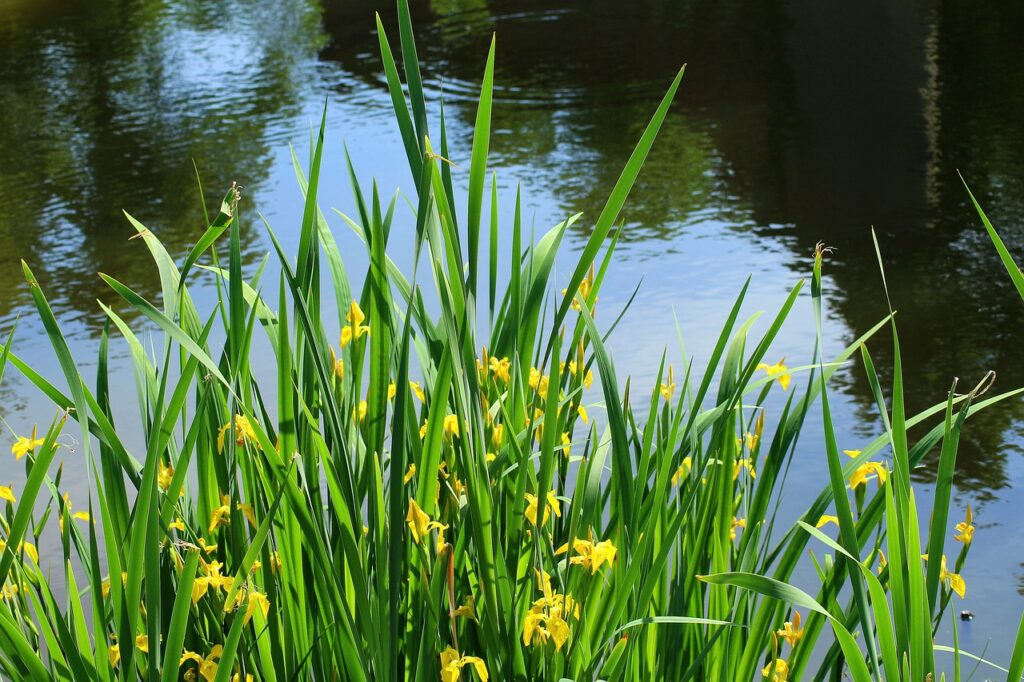
Rather than fighting the boggy elements, why not embrace them by cultivating plants that thrive in wet soil? This approach makes for low-maintenance gardening by working with the soil conditions you have and helps support local wildlife.
In this article, Ninjas, we'll explore fifteen plants that love wet soil and can add beauty and resilience to your garden. So grab yourself a brew from the dryness of your sofa, and let's talk all things bog plant!
Let's start off with a firework of a wet soil plant, the Ligularia genus. These are a real hidden gem of the bog or wet garden. Ligularia have striking serrated leaves, and some species have a dark purple or bronze underside, which in themselves are worth adding this plant to your collection! However, Ligularia also has another secret: egg yolk yellow spires of bright flowers mid-summer.
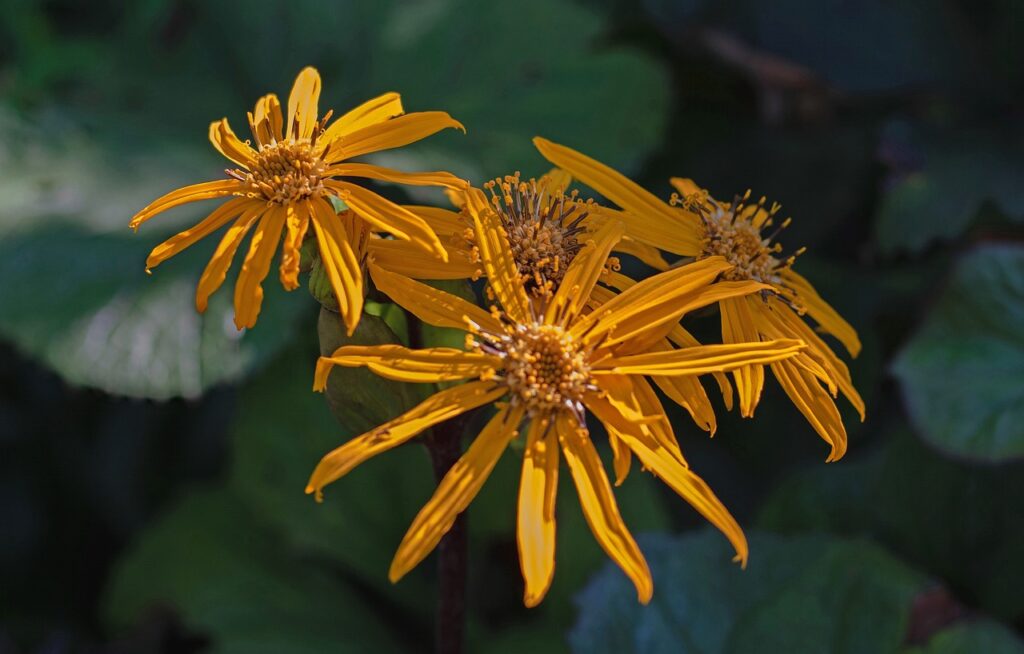
Try Ligularia przewalskii for full sun spots or Ligularia dentata for its waxy round leaf shape that looks a big like a cartoon ear! They will add real wow to your garden even when not in flower.
Iris pseudacorus, or the Yellow Flag Iris, is a beacon of cheerfulness in the world of botanical beauty. Its vibrant, sunny yellow flowers, reminiscent of fluttering flags, have been captivating gardeners and nature enthusiasts for centuries. This plant, native to Europe and Asia, has a fascinating history that adds to its charm.
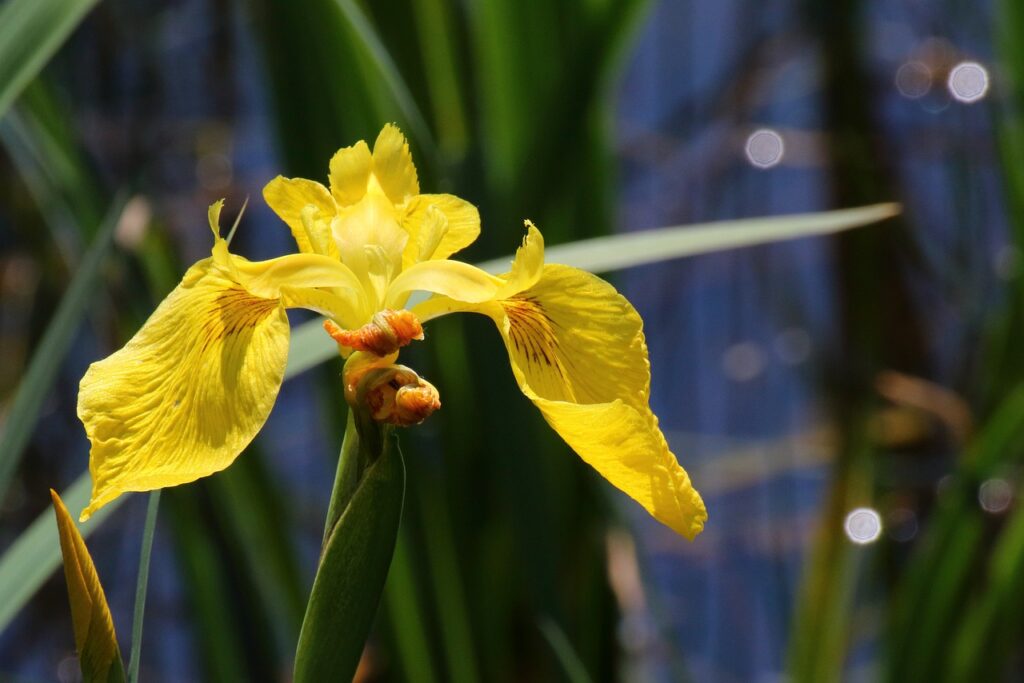
Yellow Flag Iris has been a cherished species for its aesthetic appeal and versatility. Historically, it was used as a medicinal plant in traditional herbal remedies, showcasing its practical significance. The name "pseudacorus" is derived from the Greek word "pseudo," meaning "false," which hints at its similarity to true aquatic irises.
Its resilience and adaptability are also remarkable. Yellow Flag Iris thrives in a variety of wetland environments, from shallow waters to marshy soils, making it a perfect choice for water gardens, pond margins, and damp areas. The plant's sword-like leaves, in addition to its sunny blooms, create a visual spectacle that brings life to these watery landscapes.
Did you also know that Harris Tweed, the thick wool fabric from Scotland, used to be dyed with both Iris root and Bog Myrtle to get the distinctive yellow colouration? Fascinating!
Did you know that you can take my course and learn how to become a Garden Ninja yourself? Click here for details
Who says bog plants need to be foliage-heavy and lacking in flowers? Not Purple Loosestrife that's for sure, with its vibrant purple flowers. The purple spikes of the purple loosestrife brighten up any wetland garden or boggy conditions. Loved by pollinators, this plant is a great choice for creating a natural wildlife habitat.
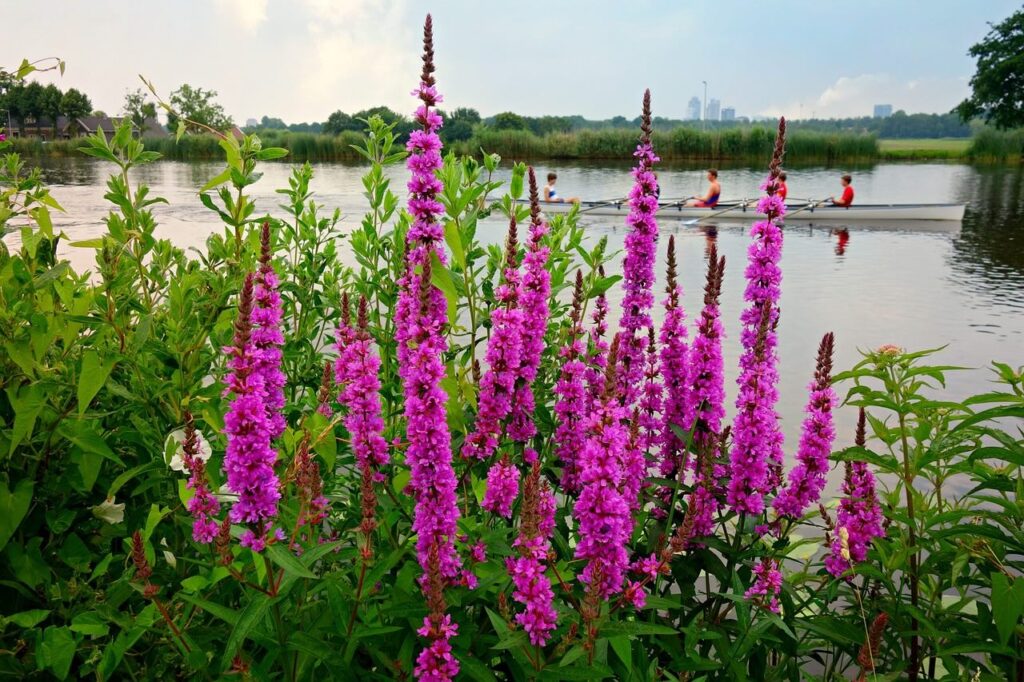
It flowers between June and August, offering vital pollen for insects and bees. In particular, long-tongued (also known as the proboscis) insects such as red-tailed bumblebees, brimstone butterflies and elephant hawk-moths.
However, it's important to note that Purple Loosestrife is considered invasive in many areas, as it can outcompete native plants and disrupt local ecosystems. As a result, it is subject to control measures in certain regions to prevent its spread. Gardeners and conservationists should exercise caution when planting Purple Loosestrife and consider native alternatives to support local biodiversity.
Fancy a bog garden plant with real impact? If you have the space, Giants Rhubard or Gunnera manicata is the one for you!
It is known for its immense size, with leaves that can reach up to 10 feet (3 meters) in diameter, making it one of the largest-leaved plants in the world. The leaves are deeply lobed and resemble those of rhubarb, which has earned it the "Giant Rhubarb" nickname. Have a look below at how big it can get once mature!
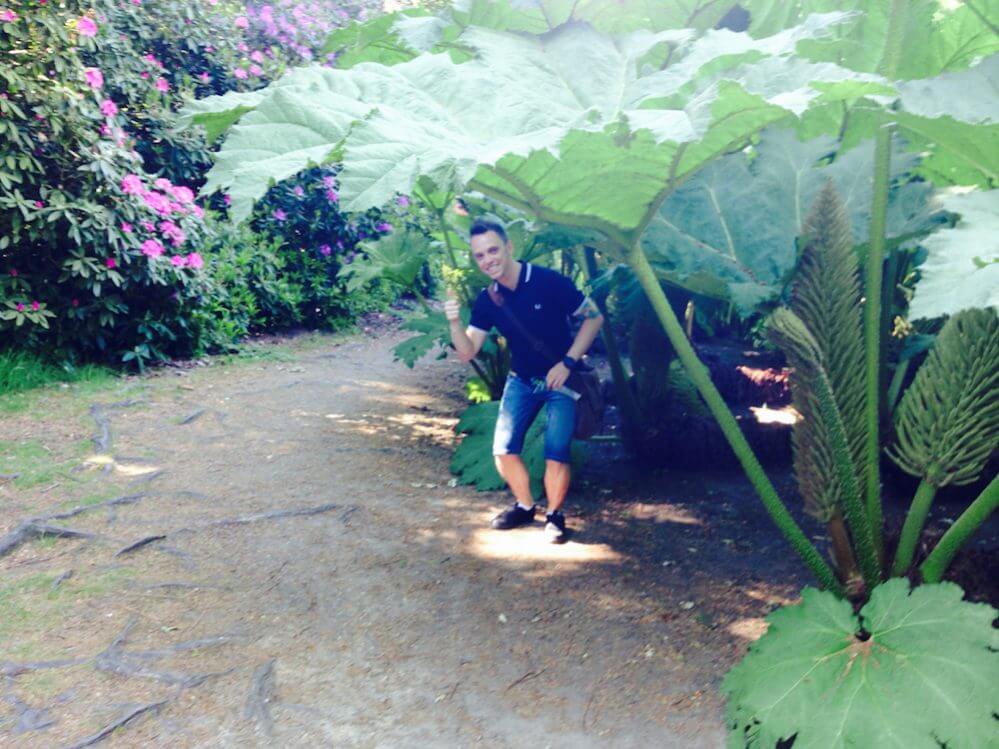
Gunnera manicata is typically found in wet, boggy areas or near water, and it thrives in consistently moist, well-draining soil. The plant is characterized by its large, umbrella-like leaves that provide ample shade and shelter for smaller plants and wildlife. In the spring and summer, long spikes adorned with tiny, greenish-red flowers emerge from the centre of the plant, creating a unique and exotic appearance.
While Gunnera manicata is an impressive addition to a garden, it's important to note that it requires substantial space due to its massive size! Additionally, it prefers a temperate climate and protection from harsh winter frosts. This is why I always advise you to cut down the massive leaves and then layer on top of the Gunnera crown (the bit emerging just above the soil) to help protect it from harsh frosts.
If you need something a bit smaller for your bog garden or wet soil, why not introduce the moisture-loving Caltha palustris? The cheerful yellow flowers of the marsh marigold are a sure sign that spring has arrived.
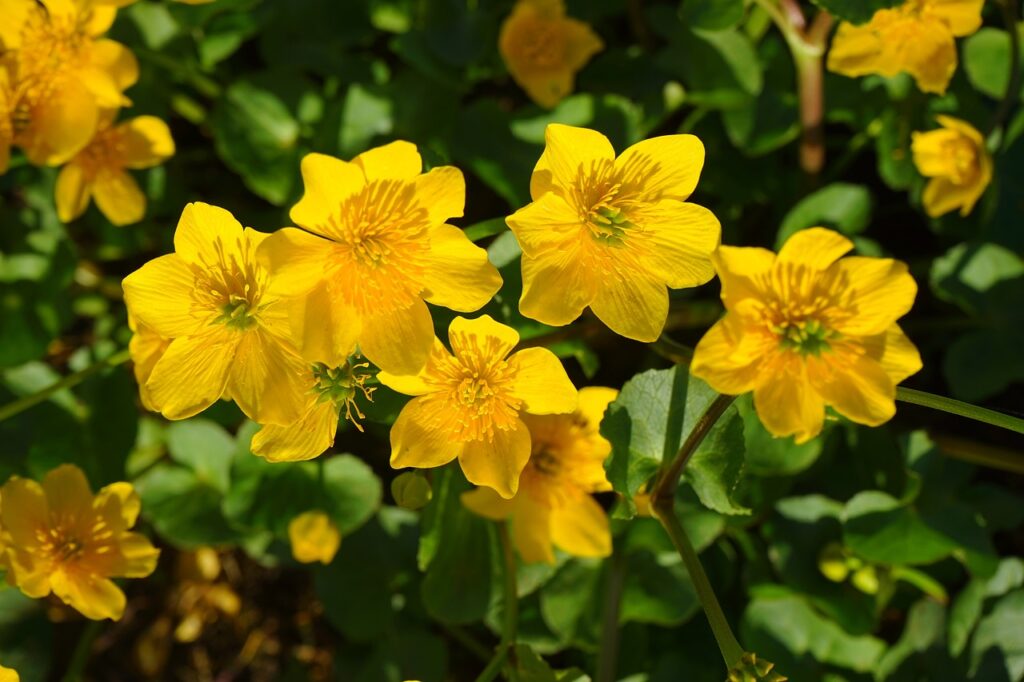
They thrive in wet areas and bring a burst of colour to waterlogged spots. Kingcup is its common name, and this plant is a great addition to the edges of ponds, boggy ditches or marshes. It's no surprise that marsh marigold is a relative of the buttercup. It needs rich, acidic soil or planted as a marginal in a pond where fish waste can provide optimal conditions for this to grow.
You won't need many of these as they spread incredibly quickly! Best of all, they are perennial and come back year after year.
Pond lovers should be excited to introduce this blue flowering petite plant. The water 'forget-me-not' works wonders in back garden ponds and water features as a marginal plant. Its sky-blue blossoms create a pop of colour to damp ground, especially if partnered up with the biennial - out of water - forget me not, Myosotis, in adjacent flower beds!
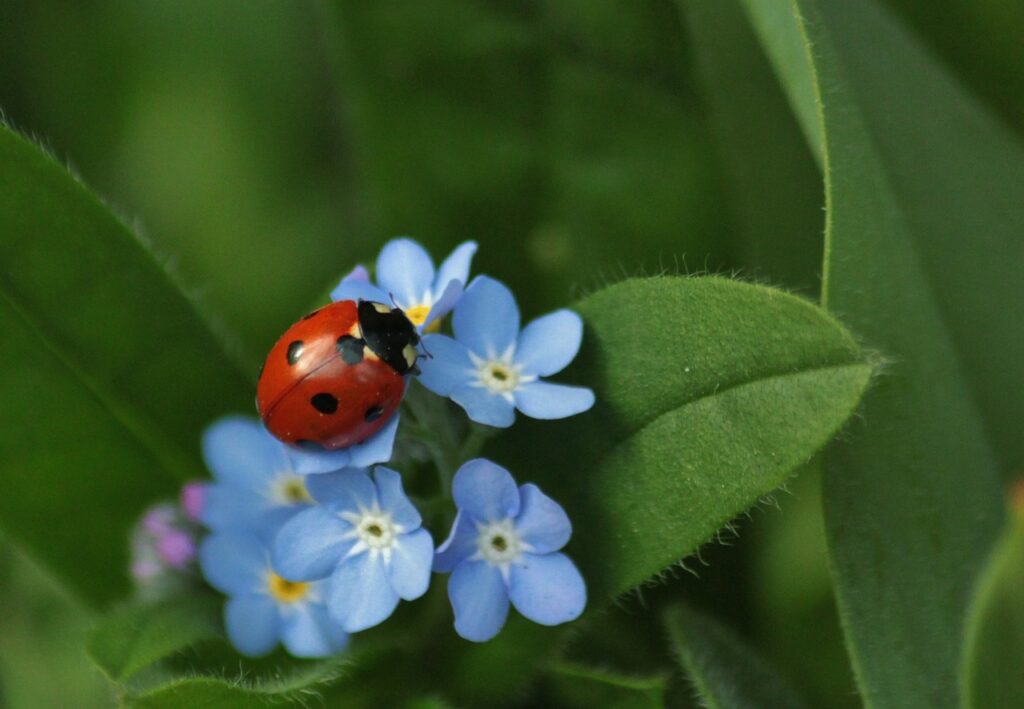
Nicknamed the 'scorpion plant' due to the way the flowers grow on stems curling up and inwards, it brings some much-needed colour during summer. As long as its roots are kept permanently damp, it will thrive on neglect! It makes a cute specimen for a 'pond in a pot' or a small 'container pond'.
Candelabra primulas are known for their striking tiered clusters of brightly coloured flowers that look like a candelabra in their shape. So, if you want to bring the unusual to your bog garden in spring, this little evergreen beauty shouldn't be overlooked. They work well when planted near our native primula vulgaris, which has a waxy ribbed evergreen leaf that complements the deciduous Candelabra primula well.
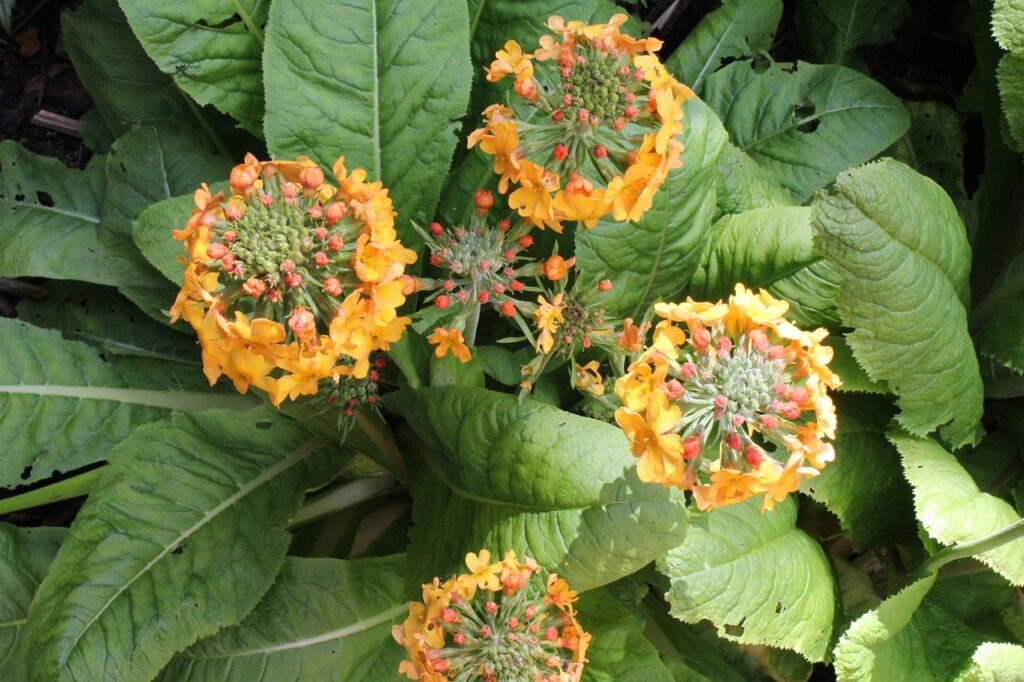
Primula bulleyana will also grow in relatively drier soils than just bog gardens as long as they don't dry out. In my experience, they are pretty tolerant of moist to water-logged soil types. They thrive in boggy conditions, making them an exceptional choice for wet gardens. They also work really well in container gardens or alpine arrangements in tufa pots.
Rodgersia is an interesting herbaceous perennial that loves damp roots due to the fact its leaves are so unusual and coarse! Their flowers fire up on 50cm long panicles that bring height to any damp garden border in the summer. The bronze-tinged pinnate leaves are pretty huge, too, at 20cm across. I consider them a smaller version of Gunnera for pocket gardens. Flowers are tiny and attract wildlife, but it's more the leaves that attract attention!
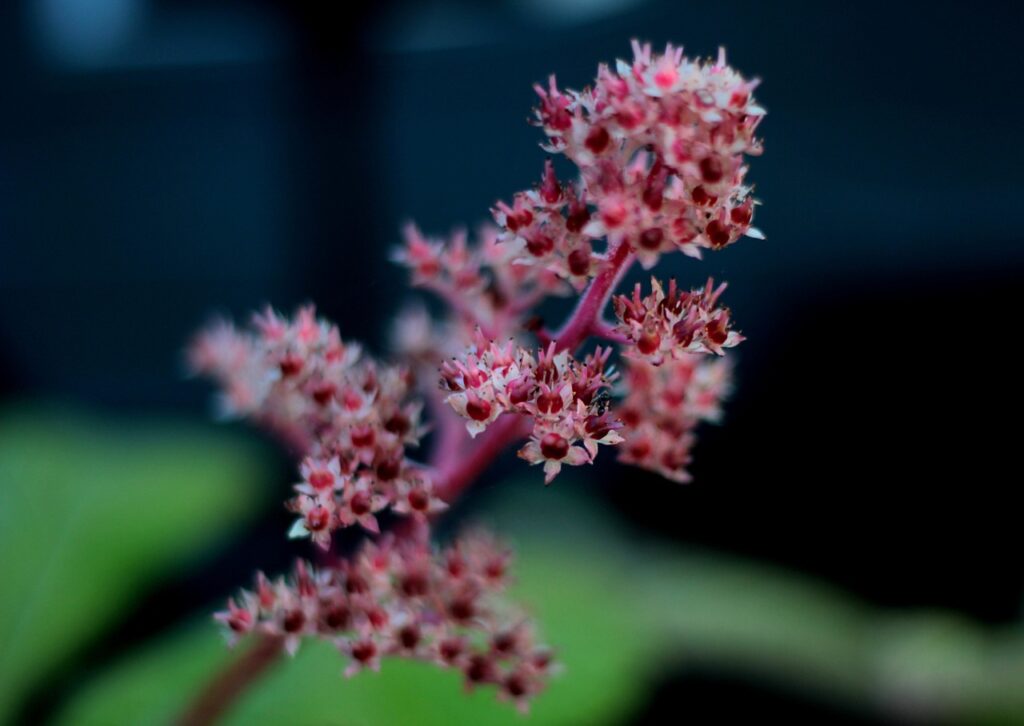
Rodgersia is great for shaded gardens where the soil is poor draining. What may surprise you is they won't tolerate heavy clay, so sandy soil, which frequently gets waterlogged, is best. Soil that is adjacent to a stream, soak away or leaking gutter is the best position. But once you've found a suitable spot they are worthwhile!
Astilbes may not spring to mind when thinking of bog gardens as they are usually sold in garden centres with the dreaded 'full sun or partial shade, any soil' label. Due to these ridiculous plant labels, Astilbes are often seen struggling across the country's gardens in full sun and free-draining soil (leading to a slow death!). But would you believe that this plant, native to Asia, particularly regions in China, Japan, and Korea, is a damp or wet soil-loving specimen?
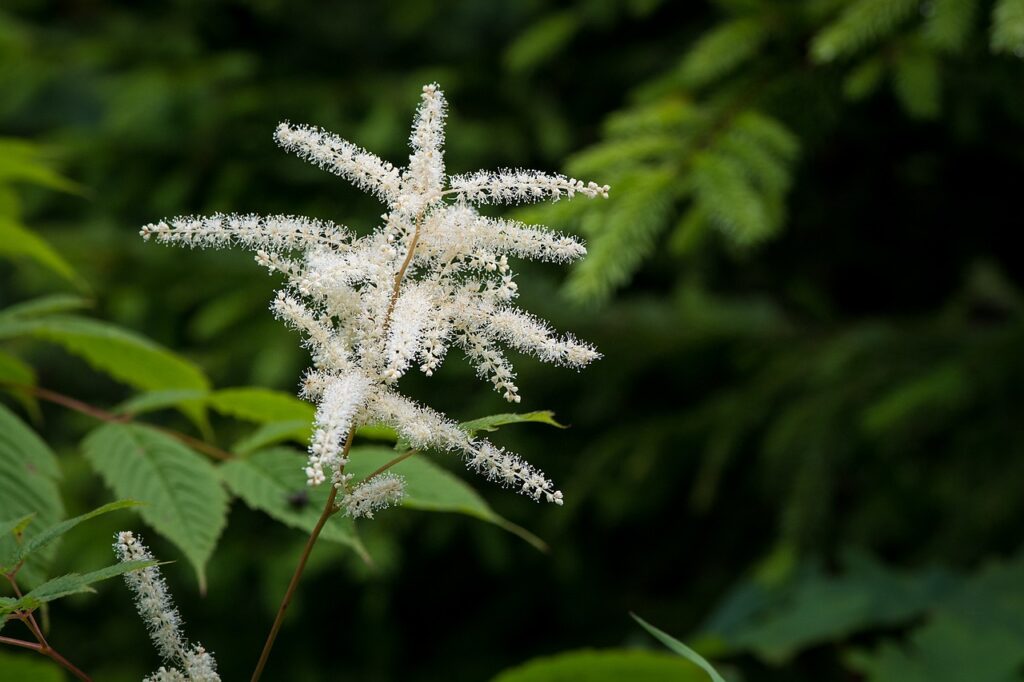
Astilbes grow naturally in the moist woodlands and along the banks of streams and rivers. Their love for consistently damp soil and shaded environments is a testament to their origins.
Their tall plumes of feathery foliage will add a pop of colour to any dappled or shady damp spot. Their leaves have fern-like foliage, which blends well in woodland schemes. Ensure they have rich soil full of either leaf mould or organic matter for them to spread and flaunt their flowers each year!
Bog Bean, also known as Menyanthes trifoliata, is like a charming water-dwelling friend for your garden. This aquatic plant is a real eye-catcher, with elegant white flowers that resemble shooting stars. It's a bit of a showstopper, thriving in wet areas like pond margins and waterlogged soil.
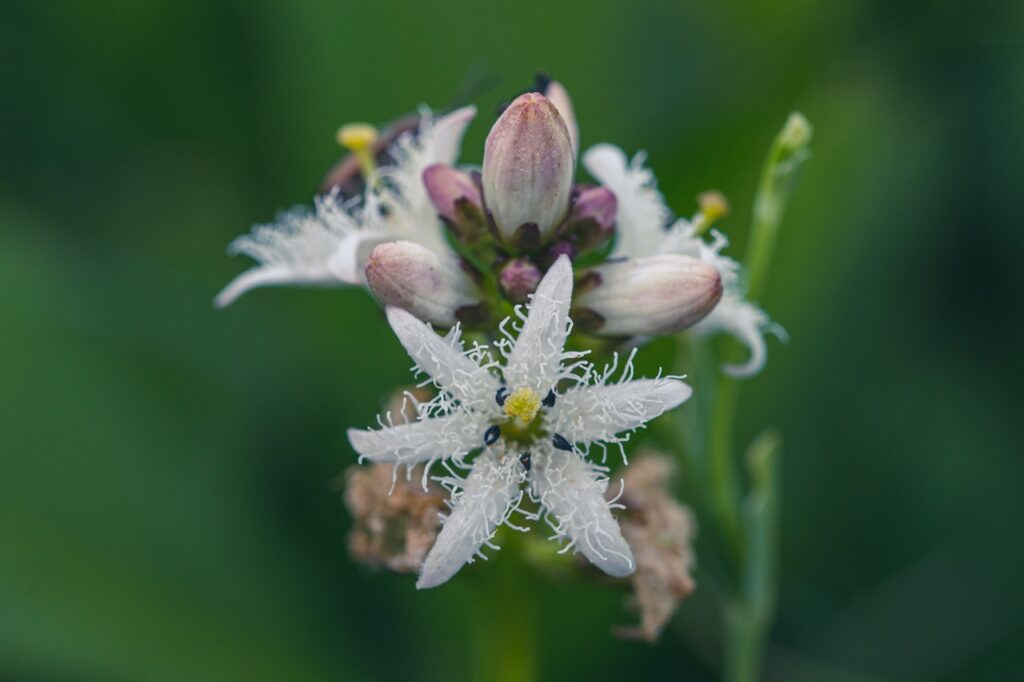
But it's not just a looker; it's a favorite of bees, adding a little extra buzz to your garden. With its delicate beauty and appeal to pollinators, Bog Bean is a delightful addition to any water feature or damp corner of your outdoor space. It's like Mother Nature's way of sprinkling stardust in your garden.
Mentha aquatica, or Water Mint, is like a burst of fresh air in your garden! This cheery herbaceous perennial not only adds a delightful touch of vibrant green to your outdoor space but also releases a refreshing, minty aroma when you brush against its foliage.
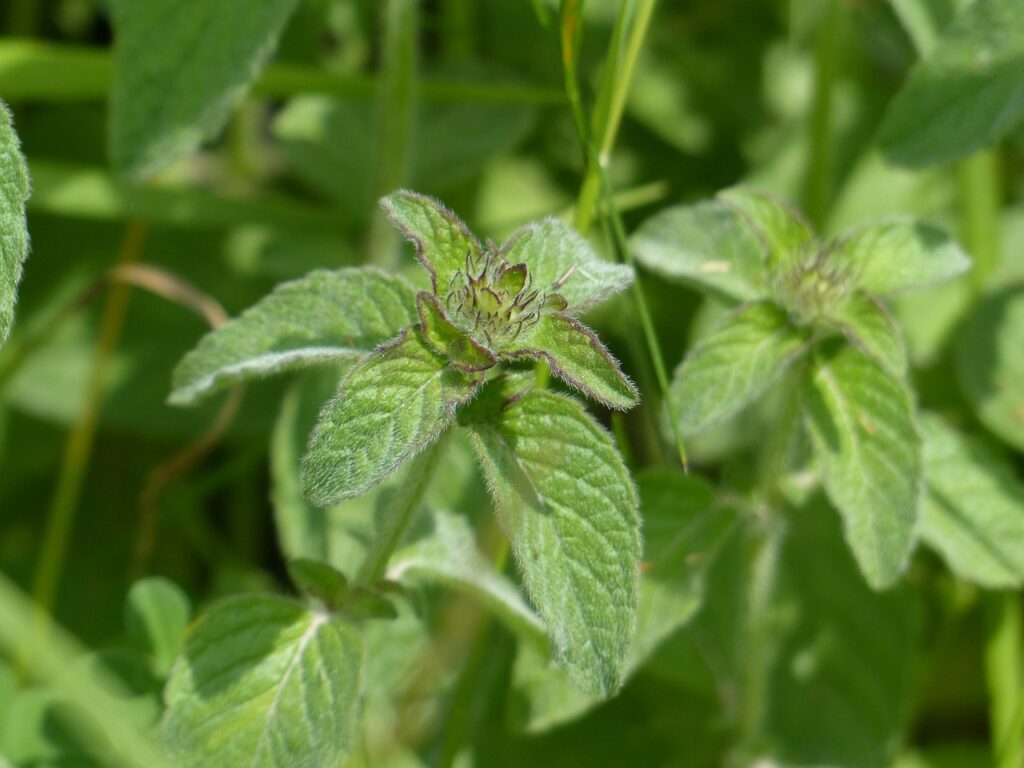
Water mint is a favorite hangout for bees and other pollinators when it flowers late spring, making your garden buzz with life. Whether you have a pond, stream, or a damp area that could use a little pep, Water Mint is here to liven things up.
The key with water mint is to contain it. Like all mint plants, it has a habit of running and spreading like wildfire. So ensure it is grown in a container pond or if planted out in a pond, placed in a pot first.
The ragged robin is an attractive herbaceous perennial that thrives in damp meadows and wetlands. Its pink or white, ragged-looking petals give it a distinct fringed or ragged flower appearance. I grow it here at Garden Ninja HQ in wet borders and my meadow and it's a fabulous plant!
This wildflower's whimsical appearance conceals its ecological significance as a vital food source for pollinators, particularly butterflies and bees. Its name is derived from the old English word "rybban," meaning to divide or tear, referencing the deeply divided petals that give it a ragged or fringed appearance.
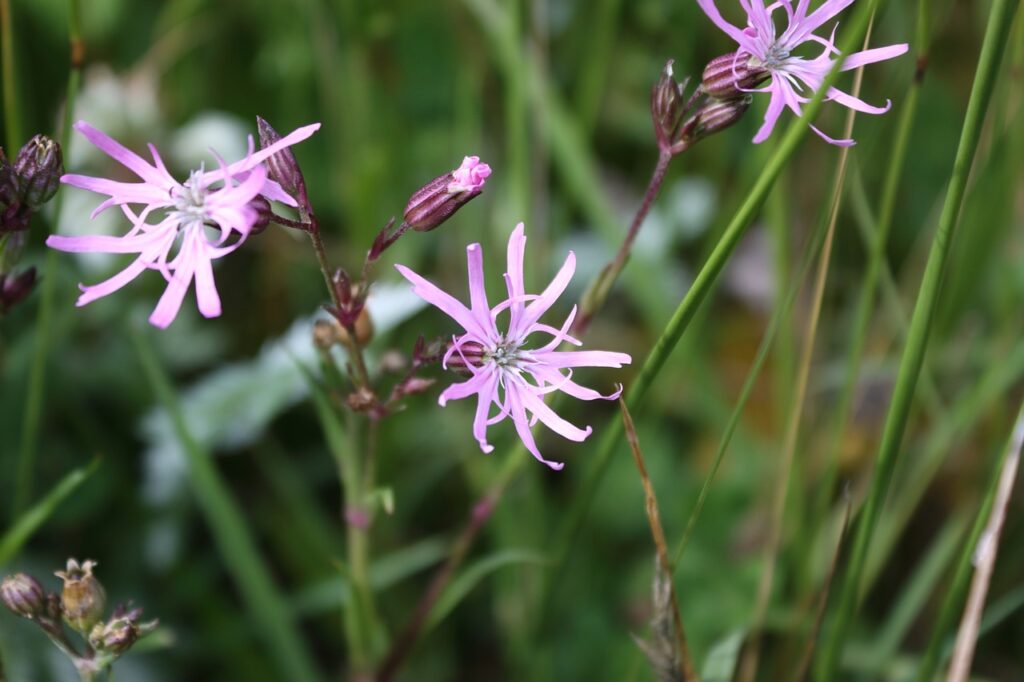
Ragged Robin is well-suited to wetter environments, thriving in damp meadows, marshes, and along riverbanks. Its captivating blooms bring an air of enchantment to these spaces and support local wildlife, making it a symbol of the delicate balance and beauty of natural ecosystems. As a garden addition or a wild treasure, Ragged Robin reminds us that even the most unassuming plants can hold a world of wonder and play a crucial role in sustaining our natural world. So if you can try and incorporate it in your gardens Ninjas!
Who doesn't love a cute, cheery flower in the garden? Well, the Geum is one of the cutest for wet soil. The water avens add a touch of elegance to wet soils with their nodding, bell-shaped flowers. It attracts butterflies and bees, making it a pollinator-friendly choice for a small damp spot. Easy to grow and slow to spread, this delicate number is a real fairy tale beauty in the garden.
Its dainty, rich pink and peachy coloured blooms add a pop of colour to damp, wet soils, like a floral celebration in the mud.
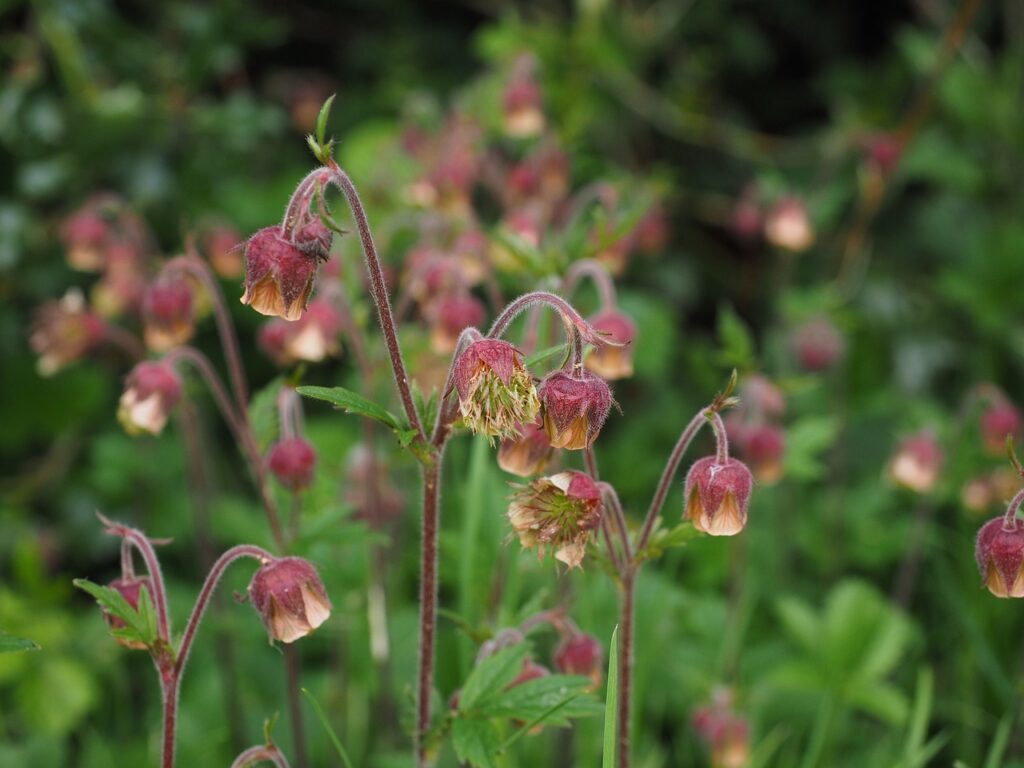
But here's the kicker: Water Avens isn't just a pretty face. It's like a good friend, offering a helping hand to your garden by preventing soil erosion. With its distinctive appearance and environmental prowess, this charming plant transforms soggy spots into vibrant, eco-friendly playgrounds.
Who says bog plants need to be foliage-heavy and dark green? What about an ornamental grass to add to the mix?
Purple Moor Grass, or Molinia caerulea, is like the garden's dancer, swaying gracefully in the breeze. With its feathery seed heads and slender stems, it brings a touch of elegance to your landscape. This ornamental grass is a purple-hued showstopper, perfect for planting near ponds and water's edge. It's like nature's way of saying, "Let's add a little poetry to your garden."
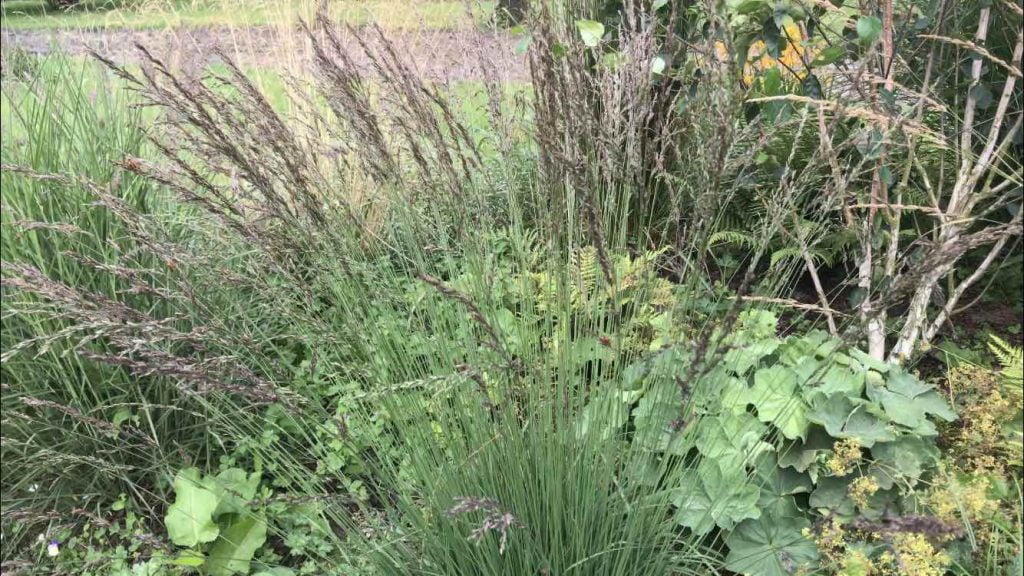
I use this throughout my garden designs because it will also tolerate dryer soils, making this grass a great choice no matter what the soil type or sunlight levels in your garden! It self seeds everywhere, so you'll soon end up with free Molinia plants popping up everywhere!
Watercress, often found in streams and slow-flowing water, is not only a delightful addition to salads but also an attractive plant for wet areas in the garden. It can be grown in shallow, running water or boggy soil.
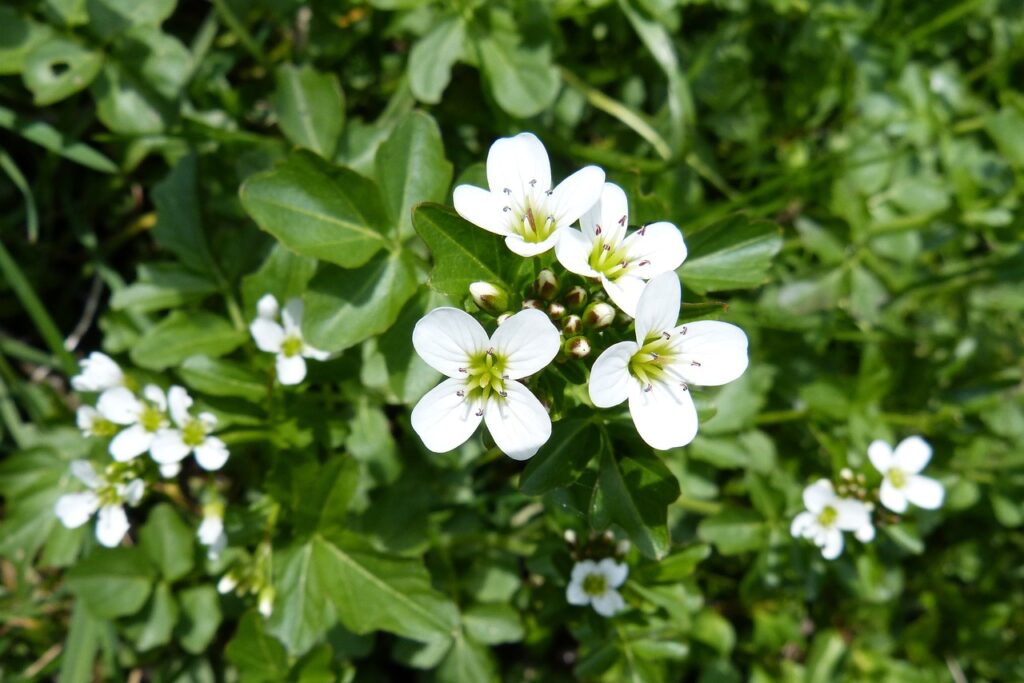
Begin by finding a spot that receives dappled sunlight or partial shade. While watercress thrives in aquatic conditions, you can cultivate it in consistently moist soil or even in containers placed in a shallow dish of water. Prepare the soil by ensuring it's rich in organic matter and well-draining. Sow watercress seeds directly or transplant seedlings, leaving about 6-8 inches of space between plants. Regularly water your watercress to keep the soil consistently moist. Harvest by cutting the leaves as needed, which are best enjoyed in salads and sandwiches.
Keep the water fresh by replacing it every couple of weeks with rainwater, and your watercress will keep producing!
Working with the soil you have rather than trying to replace it is a far more ecological approach to gardening. It's like having a secret weapon that lets you embrace the unique qualities of your garden's natural conditions.
Wet-loving plants not only make gardening easier by reducing the need for constant watering but also contribute to the health of your local ecosystem. By choosing the right plants for your wet soil, you create a mini-habitat where native wildlife can flourish, from pollinators to amphibians. All because the original conditions support this! Let's take a look at a few more benefits of embracing wet-loving plants in your moisture-retentive garden soil!
By choosing plants that thrive in wet soil, you create a diverse and thriving ecosystem in your garden, attracting a variety of insects and wildlife. You're working in balance rather than working against the conditions that your garden favours.
Wet-loving plants are often well adapted to local conditions and require minimal care once established. Especially in terms of watering!
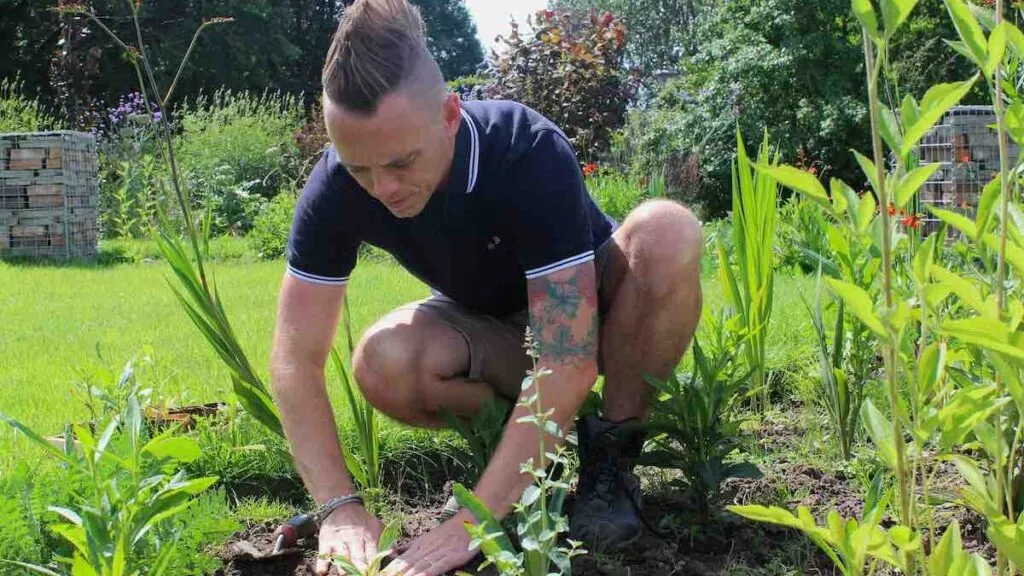
Planting these species can help prevent soil erosion in waterlogged areas. Their roots can help bind riverbanks, and they filter out particulates, improving the water quality. Bog plants feed on excess nitrogen in the water, helping provide a balance for other aquatic life forms.
The unique and colourful appearance of these plants can enhance the visual appeal of your garden especially as many of them look so unusual compared to the usual garden planting schemes. So go for it!
Incorporating plants that love wet soil into your garden can bring numerous benefits, from supporting local wildlife to creating a beautiful, low-maintenance landscape. The UK's climate may be unpredictable, but these plants thrive in wet conditions, ensuring that your garden remains vibrant and lively even during the rainiest seasons. So, if you're looking to embrace the British weather and add a touch of natural beauty to your outdoor space, consider these wet-loving plants for your next gardening project.
Make sure you visit my Youtube channel, for more gardening guides. You can also check out my Tweet, Facebook or Instagram for more garden help and tips!
Happy gardening!



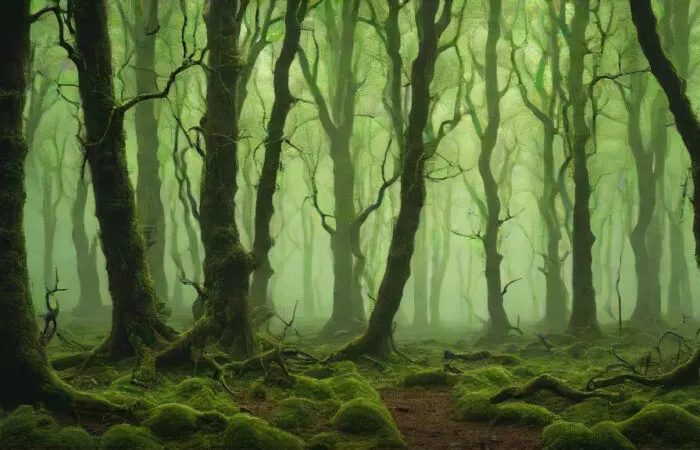
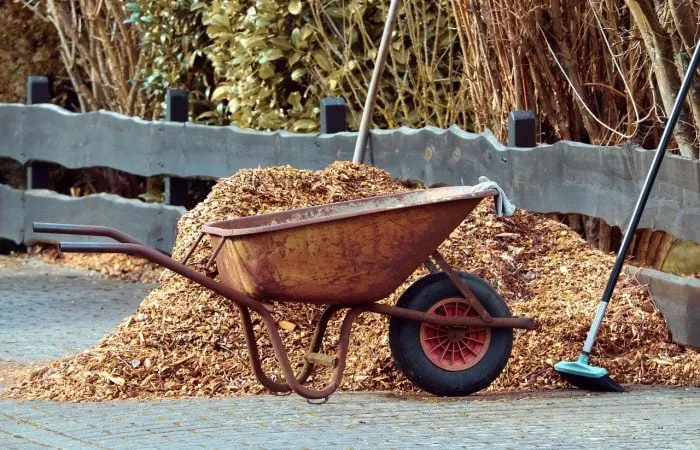
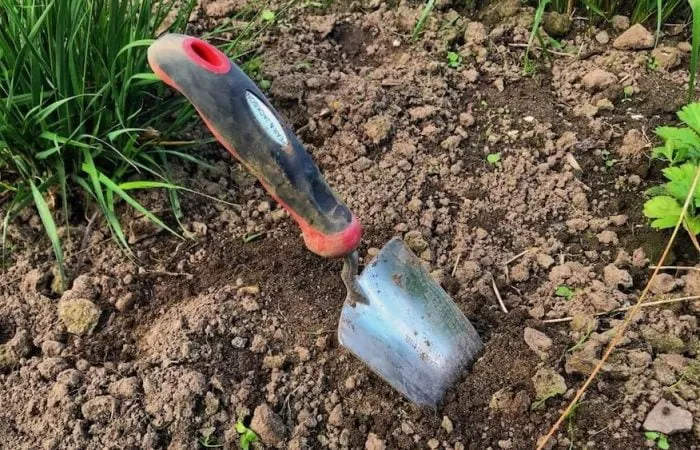
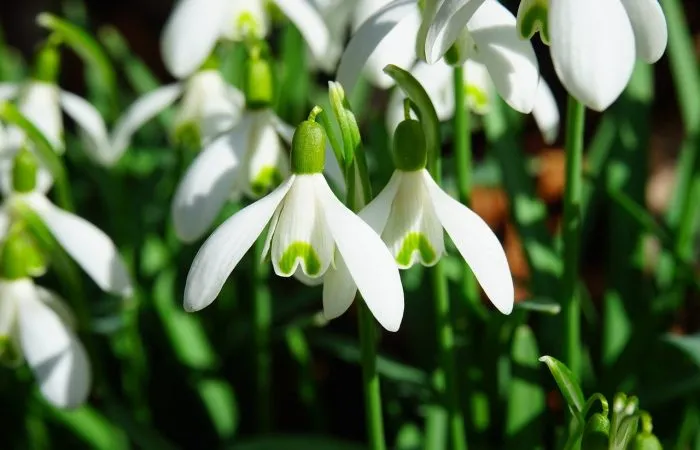
JOIN THE NINJAS

Be the first in line for new Guides, Discount codes and Offers